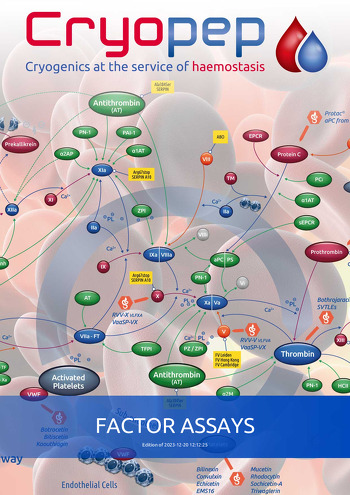TAFI, thrombin-activatable fibrinolytic inhibitor, (also known as carboxypeptidase U and plasma pro-carboxypeptidase B) is a 60kDa molecular weight glycoprotein (proenzyme form) found in human plasma that modulates fibrinolysis. This proenzyme is converted to an active form of molecular ratio 35kDa, TAFIa, after proteolytic cleavage by the thrombin / thrombomodulin complex.
TAFIa possesses carboxypeptidase activity with a preference for cleavage of lysine and arginine residues from the end of proteins. Modulation of fibrinolysis occurs when TAFIa cleaves the C-terminal arginine and lysine residues of partially degraded fibrin. Removal of arginine and lysine residues from fibrin inhibits the continued degradation of fibrin by tPA-activated plasmin. TAFI may play a central role in thrombosis and fibrinolysis due to its ability to delay fibrin clot lysis.
The TAFI contained in the samples is captured by the capture monoclonal antibody located at the bottom of the wells. After washing, the TAFI is revealed by an anti-human TAFI polyclonal antibody coupled to peroxidase.
The TMB will thus react with the peroxidase to form a blue colored compound which will be stopped by the stop solution to give a yellow compound where the absorbance of the solution is measured at 50 nm.
Absorbance is directly proportional to the amount of TAFI present in the sample.
- 96-well microtest plate coated with human anti-TAFI antibody
- 2 vials x Sample Diluent-F, 50 mL
- 1 vial x conjugate diluent, 25 mL
- 3 vials x human anti-TAFI antibody immunoconjugate coupled to HRP, lyophilized
- 1 vial x washing solution, 20 x concentrate, 50 mL
- 1 vial x TMB substrate, ready to use, 25 mL
- 1 bottle x stop solution, 6 mL
- 3 vials x TAFI plasma calibrator, lyophilized
- 1 vial x TAFI Control I - High, lyophilized
- 1 vial x TAFI Control II - Low, lyophilized





















